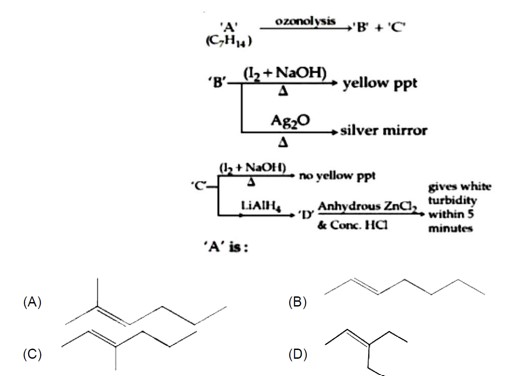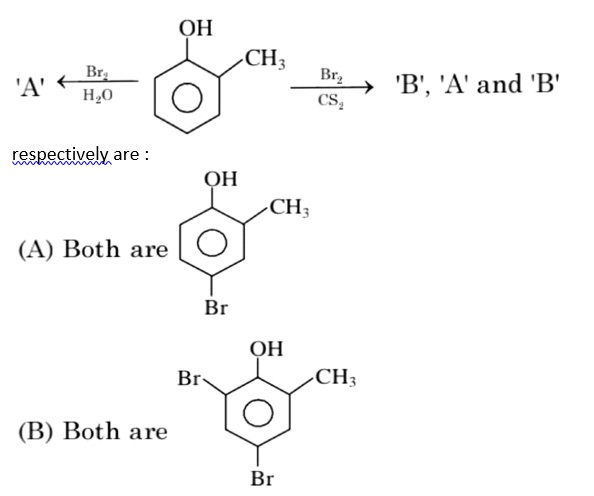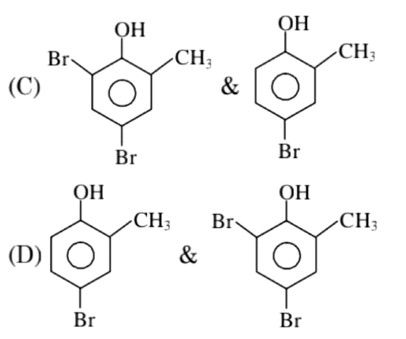Consider the following reactions:
'A' (C₇H₁₄) --(ozonolysis)--> 'B' + 'C'
'B' --(I₂ + NaOH)--> yellow ppt
'C' --(I₂ + NaOH)--> no yellow ppt
'C' --(Ag₂O/Δ)--> silver mirror
'C' --(LiAlH₄)--> 'D' --(Anhydrous ZnCl₂ & Conc. HCl)--> gives white turbidity within 5 minutes
'A' is:
Consider the following reactions:
'A' (C₇H₁₄) --(ozonolysis)--> 'B' + 'C'
'B' --(I₂ + NaOH)--> yellow ppt
'C' --(I₂ + NaOH)--> no yellow ppt
'C' --(Ag₂O/Δ)--> silver mirror
'C' --(LiAlH₄)--> 'D' --(Anhydrous ZnCl₂ & Conc. HCl)--> gives white turbidity within 5 minutes
'A' is:
Option 1 -
a
Option 2 -
b
Option 3 -
c
Option 4 -
d
-
1 Answer
-
Correct Option - 1
Detailed Solution:Kindly consider the following figure
Similar Questions for you
CoCl3.NH3 + AgNO3
x = 5
In H2O (polar solvent) dibromophenol derivative and in CS2 (non-polar solvent moneobromo phenol derivate is obtained.
3d => 4d => 5d CFSE increases for the same ligands.
Factual
⇒ leaching methods is used for those metal in which metal is more soluble than impurities and these are Al, Au, Ag, low grade Cu
σ bonded organometallic compound ⇒ M – C
σ-bond
and in π – bonded organo metallic compound
M – C
π bond
In ferrocene, there is π-bond
Taking an Exam? Selecting a College?
Get authentic answers from experts, students and alumni that you won't find anywhere else
Sign Up on ShikshaOn Shiksha, get access to
- 65k Colleges
- 1.2k Exams
- 679k Reviews
- 1800k Answers




